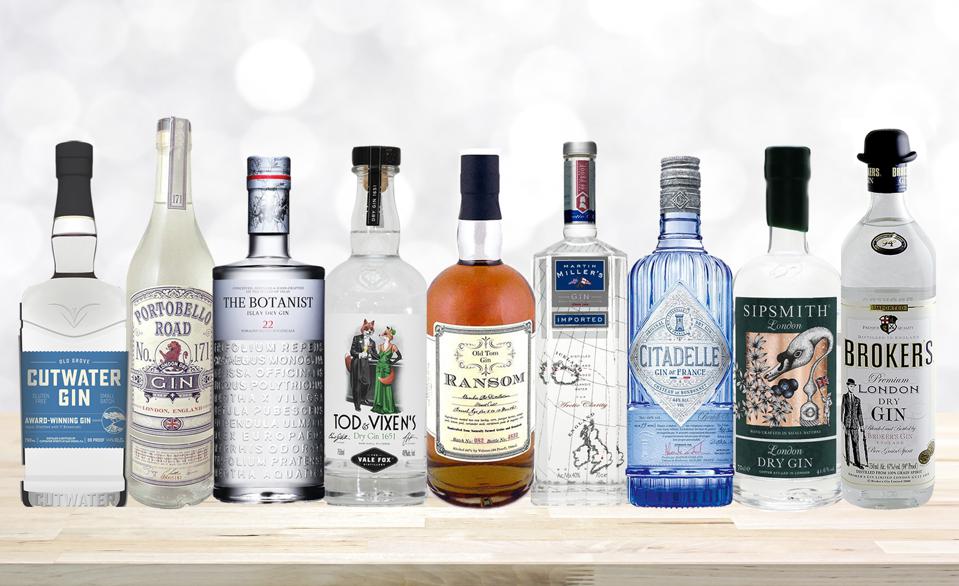What is rum made from
Rhum is a French variation of the word rum, and it’s used by many of the producers based on the French islands in the Caribbean.
Rum is a liquor made by fermenting then distilling . sugarcane molasses or sugarcane juice. The distillate, a clear liquid, is usually aged in oak barrels. Most rums are produced in Caribbean and North and South American countries, but also in other sugar-producing countries, such as the Philippines, and Taiwan.
Rums are produced in various grades. Light rums are commonly used in cocktails, whereas “golden” and “dark” rums were typically consumed straight or neat straight or neat iced, or used for cooking, but are now commonly consumed with mixers. Premium rums are made to be consumed either straight or iced.
10 Best Craft Rum Distillery in 2020
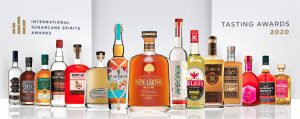
Source: www.10best.com
LYON RUM
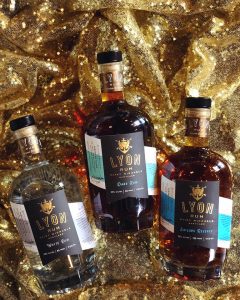
LYON RUM is the flagship spirit of Windon Distilling Company-a micro distillery on the Chesapeake Bay dedicated to distilling American Rum from 100 pecent Louisiana sugarcane using tradional pot stills. Rum lovers have numerous options to choose from: White Rum, Dark Rum and barrel-rested Sailors Reserve Rum, plus Curacao, Coffee Rum, Rock and Rum and seasonal specialties like toasted Coconut Rum, Overproof Pineapple Rum and Blackberry Harvest Rum.
(Photo courtesy of LYON RUM)
MUDDY RIVER DISTILLERY

Muddy River Distillery specializes in rum, made from top quality ingredients in custom-built stills. Each rum is made with sugar cane molasses and sugar. Queen Charlotte’s Reserve spends a year in new American white oak, while Spiced Carolina Rum is blended with spices for hints of cinnamon and vanilla. The distillery also makes a coconut rum and basil rum.
(Photo courtesy of Muddy River Distillery)
Wicked Dolphin Distillery
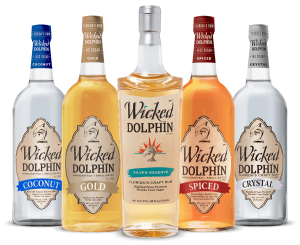
Wicked Dolphin Distillery uses 100-percent Florida-grown sugarcane to create small-batch rums in a traditional copper pot still. The spirit then gets aged in used American white oak Kentucky bourbon barrels for a minimum of one year (and up to 14 years). Wicked Dolphin also produces a silver rum, coconut rum (made from real coconut water), black rum and vanilla bean rum.
(Photo courtesy of Wicked Dolphin)
Arizona Craft Beverage
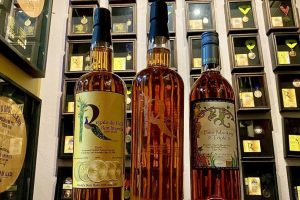
Each rum from Arizona Craft Beverage starts with pure cane sugar, juiced and combined with a special yeast strain to produce delicate rums. The spirits are then aged in spent whiskey and wine barrels (or new barrels for black rum) to add complexity to the finished product.
(Photo courtesy of Arizona Craft Beverage)
Three Roll Estate

Three Roll Estate uses sugarcane grown on the Louisiana alluvial flood plain to distill their lineup of “cane to glass” rums. This includes a once-a-year Rhum Agricole made from fresh-pressed cane juice, a cachaça-inspired Brazilian-style rum, white rum, dark rum, spiced rum and a cinnamon-infused rum.
(Photo courtesy of Three Roll Estate)
Seven Caves Spirits

Seven Caves Rum starts as molasses and sugar cane, distilled and aged in new oak casks. The limited release series ages rums for a second time in finishing barrels from bourbon, rye and Madeira distilleries around the globe.
(Photo courtesy of Seven Caves Spirits)
Koloa Rum Company

All the rums from Koloa Rum Company are made with Hawaiian sugarcane and Mount Waialeale rainwater and twice distilled in a vintage copper pot still. Options include white and aged rums, as well as rums flavored with coconut, coffee and spices.
(Photo courtesy of Koloa Rum Company)
KoHana Distillers

Native sugarcane was growing on the Hawaiian Islands long before the first plantations existed. At KoHana Distillers, sugarcane is harvested by hand, pressed into juice and distilled into a pure cane rum in small batches. The white agricole rum rests in oak to produce the barrel aged agricole rum. There’s also a cask-strength rum and a cocoa and honey rum.
(Photo courtesy of KoHana Distillers)
Richland Distilling Company

Richland Distilling Company uses only two ingredients in crafting its fine spirits: pure, unrefined cane sugar syrup and natural water. That’s it. Single Estate Old Georgia Rum starts by distilling pure cane juice, then aging the rum in new American white oak barrels for at least 32 months. Sugar cane comes from the proprietor’s own estate, and the water is pulled from the Georgia aquifer.
(Photo courtesy of Richland Distilling Company)
Smoky Quartz Distillery

Smoky Quartz Distillery, a grain-to-glass operation on the southern coast of New Hampshire, makes their Granite Coast Rum from American molasses, fermented at high temperature with champagne yeast. The mash is then distilled in an 8-plate still and rested for two weeks, allowing it to breathe. It’s then cut to 80 proof with Monadnock spring water.
(Photo courtesy of Smoky Quartz Distillery)
How to make rum
To start making rum, you need sugarcane. Imported during the 1600s and now growing across the Caribbean, it’s a tall grass packed with sugary sap. It’s cut down and pressed, producing a sweet liquid called sugarcane juice. To make refined sugar, the juice is concentrated to remove water and crystallized. At each stage of refinement, more sugar is removed, and the remaining juice gets thicker and darker, until it becomes molasses.
It’s these two ends of the sugar refinement process – juice and molasses – that are used to make rum.
There are many different classifications of rum, but at the simplest we can break the whole lot down to three types based on what they are made from.
Countries of Origin
Rum has different characteristics depending on the country of origin.
Delicately flavored rums that are mainly white but can include some golden or aged rums (Cuba, Bahamas, Puerto Rico, Trinidad, The Dominican Republic, Virgin Islands). Elegant and perfumed rums (Barbados); Pungent and fruity rums (Jamaica); Or a grassy, fruity style of rum made from fermented cane juice – Rhum Agricole (Martinique, Guadeloupe, Haiti).
History of Rum Making
When it comes to drinks with history, rum has packed more into a shorter time than most. Despite only appearing in something approaching its current form in the 17th century, the past 400 years have been intertwined with the explosion of international trade and colonization of the Americas.
Rums originated in the West Indies and are first mentioned in records from Barbados in about 1650. They were called “kill-devil” or “rumbullion” and by 1667 were simply called rum. Rum figured in the slave trade of the American colonies: slaves were brought from Africa and traded to the West Indies for molasses; the molasses was made into rum in New England; and the rum was then traded to Africa for more slaves. British sailors received regular rations of rum from the 18th century until 1970. Rum, the major liquor distilled during the early history of the United States, was sometimes mixed with molasses and called blackstrap or mixed with cider to produce a beverage called stonewall. Most rums are made from molasses, the residue remaining after sugar has been crystallized from sugarcane juice, containing as much as 5 percent sugar. Some countries import molasses for use in rum production. Where sugar industries are undeveloped, rum is often made with sugarcane juice.
The flavour of Rums
The characteristic flavour of specific rums is determined by the type of yeast employed for fermentation, the distillation method, aging conditions, and blending.The heavy, dark, and full-bodied rums are the oldest type and have strong molasses flavour. They are primarily produced in Jamaica, Barbados, and Demerara in Guyana. Such rums are usually produced from molasses enriched with the skimmings, or dunder, remaining in the boilers used for sugar production. This liquid attracts yeast spores from the air, resulting in spontaneous, or natural, fermentation. The resulting slow fermentation period allows full development of flavour substances. The rum is distilled twice in simple pot stills, producing a distillate of clear colour that turns to a golden hue as the distillate takes up substances from the oak of the wooden puncheons used for storage during the aging period. Colour is deepened by the addition of caramel after aging. The Jamaican rums are always blended and are aged for at least five to seven years. They are usually marketed with an alcohol content of 43–49 percent by volume (86–98 U.S. proof). New England rum, made in the United States for over 300 years, has strong flavour and high alcohol content. Batavia arak is a pungent rum produced on the Indonesian island of Java.
The production of dry, light-bodied rums began in the late 19th century This type, produced mainly in Puerto Rico and the Virgin Islands, employs cultured yeast in fermentation, and distillation is accomplished in modern, continuous-operation patent stills. The rums are usually blended and are aged from one to four years. Those rums marketed as white-label types are pale in colour and mild in flavour; a gold-label rum has a more amber colour and more pronounced and sweeter flavour, resulting from longer aging and the addition of caramel. Straight rum is a popular drink in rum-producing countries. Elsewhere, rum is usually consumed in mixed drinks, with light rums preferred for such cocktails as the daiquiri and dark rums used in such tall drinks as the rum Collins. Rum is frequently used as a flavouring in dessert sauces and other dishes. It is also used to flavour tobacco.
Please find Rum Glass Bottle from MC Glass Bottle Company
What Can We Do for You
Our clients come from around the world including marketing served such as food and beverage, health and beauty, and pharmaceutical industrial. We service customers of all levels. Some clients are end user of distillery, coffee bar, juice bar and food drink restaurants and other customer purchasing volume quantities having filling line of craft beer, high-end Olive oils and liquor/spirits. We also serve medicine packaging industry providing quality consistency pill and tablet amber or frosted glass jars.
MC Glass Bottle is your reliable glass bottle manufacturer making custom glass bottles and offer a variety of glass bottle packaging services including stocking programs and custom mold design. MOQ for a custom mold design bottle is 20,000pcs to 50,000pcs.
Our staff works closely with our suppliers to inspect the full production procession. Some staff have nearly 10 years in glass bottle making industry and others can help sourcing other packaging from reliable sources like gift boxes and stainless-steel straws.

